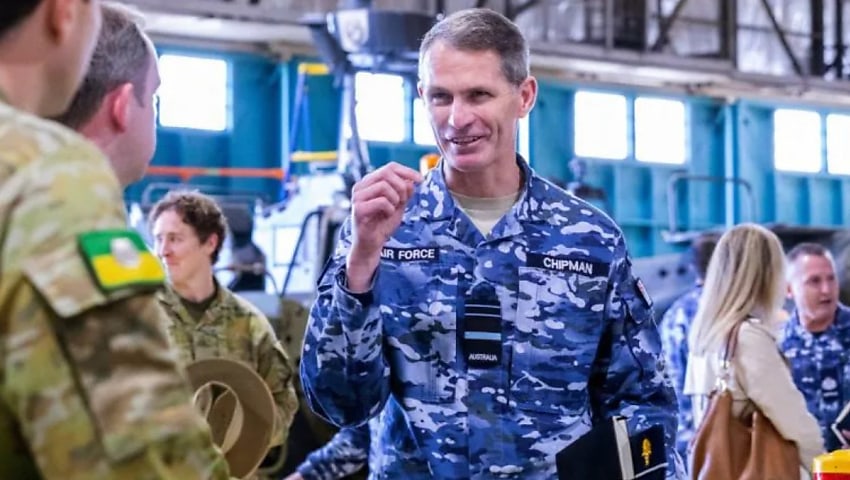The new Chief of Air Force has said the RAAF will continue to operate over the South China Sea despite a number of incidents involving the Chinese military.
To continue reading the rest of this article, please log in.
Create free account to get unlimited news articles and more!
In his first public comments since his promotion, Air Marshal Robert Chipman said it would be “business as usual” for Australia’s aircraft in the region.
It comes after a Chinese J-16 cut across the nose of a RAAF P-8 Poseidon in May in what Defence branded a “dangerous manoeuvre” that was a safety threat to the Australian crew.
“We think that China has a formidable aerospace capability, and they have concentrated that aerospace capability in the South China Sea region to deter others from going into that airspace,” AIRMSHL Chipman said.
“It doesn’t make it impenetrable, and it doesn’t mean you can’t deliver military effects to achieve your interests when you are operating against China. So I don’t think to that extent it’s an exclusive area to us.
“We have … experienced recent encounters with Chinese, which have been robust to say the least and to make a finer point, they’ve been unsafe.
“We have certainly seen a recent spate of unsafe incidences, but it’s not a trendline we can see sustained. Our operations haven’t changed. It’s still business as usual for us.”
AIRMSHL Chipman was speaking to the media after hosting US Secretary for the Air Force Frank Kendall.
The incident in May over the South China Sea saw a J-16 accelerate so close to the Australian aircraft that a “bundle of chaff” was ingested into its engine.
Defence Minister Richard Marles said the P-8 returned to base safely but added that the incident would not deter the RAAF from continuing to fly over the disputed area.
The RAAF P-8 Poseidon is a maritime patrol aircraft used for various roles, including reconnaissance and search and rescue.
On 26 May, it was undertaking “routine maritime surveillance activity” in international airspace in the South China Sea region.
Marles told reporters in Melbourne that the Chinese J-16 “accelerated and cut across the nose of the P-8, settling in front of the P-8 at very close distance”.
“At that moment, it then released a bundle of chaff, which contains small pieces of aluminium, some of which were ingested into the engine of the P-8aircraft.
“Quite obviously, this is very dangerous.
“The activity of the P-8 form part of maritime surveillance activity which has been undertaken by Australia in the South China Sea for decades – other countries do the same.
“I want to make it also very clear that this incident will not deter Australia from continuing to engage in these activities, which are within our rights and international law, to ensure that there is freedom of navigation in the South China Sea because that is fundamentally in our nation’s interest.”
AIRMSHL Chipman only became the Chief of Air Force in June, taking over from Mel Hupfeld.
Chipman joined the RAAF in 1989 and has enjoyed an extraordinary career that saw him initially posted to No. 25 and then No. 76 Squadron flying the Macchi MB-326H, a light military jet trainer. He then completed a F/A-18 Hornet Operational Conversion in 1995.
After a tour as a Hornet instructor at No. 2 Operational Conversion Unit, he returned to No. 75 Squadron as its fighter combat instructor and flight commander.
Other roles have included helping to oversee the Hornet Upgrade Program in 2004, returning to be commander of No. 75 Squadron and assuming command of No. 81 Wing.
[Related: Chinese ambassador defends RAAF interception]

 Login
Login







